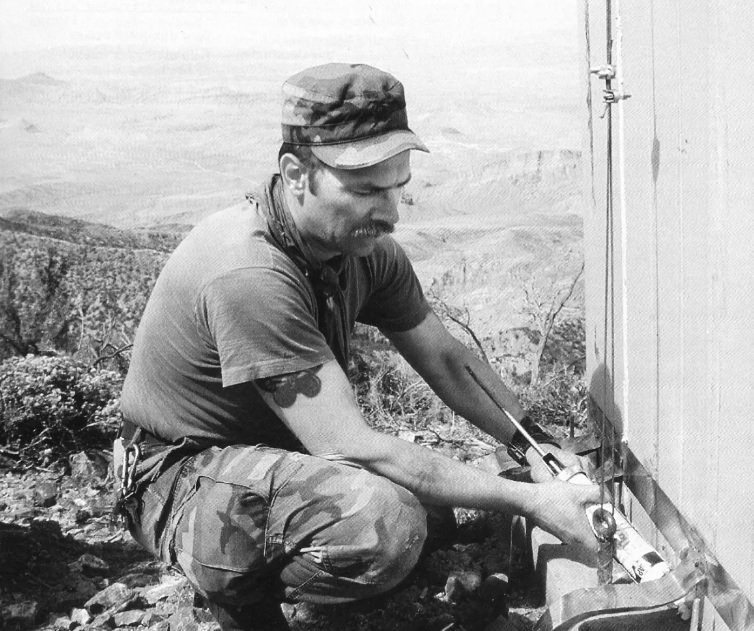96th ARMY RESERVE COMMAND HISTORY
(1967-2009)
On 22 December 1967, the Department of the Army announced that Salt Lake City, Utah had been chosen as the site for one of the eighteen new nationwide Army Reserve Command (ARCOM) headquarters. The ARCOM would command all Army Reserve units in Utah, Idaho and Montana. In March 1968, the numerical "96" were assigned to the command.
In March 1971, the states of Wyoming, Colorado and both of the Dakotas were added to the 96th ARCOM, making it geographically the largest Army Reserve command in the United States. Two years later a six-state configuration was created when the ARCOM lost both Dakotas and gained New Mexico.
Another major Army reorganization in October 1984, returned the ARCOM to its 1971, seven-state area of responsibility.
Integration of active and reserve component units led to numerous reserve mobilizations during the Gulf War. The 96th ARCOM had 20 units activated for Operations Desert Shield and Desert Storm between the fall of 1990, and through the winter and spring of 1991. These units provided engineering, logistic support, medical evacuation, and military police support to the Gulf War. Between September 1990 and February 1991, the 96th ARCOM called up over 3000 of its reservists in twenty organizations.
In April 1996, the U.S. Army Reserve underwent a major reorganization reducing the continental U.S.-based Army Reserve Command headquarters from 19 to 10. The new commands were re-designated as U.S. Army Regional Support Commands (RSCs). The 96th RSC's boundaries were modified to align with those of the 8th Federal Emergency Management Agency (FEMA) region boundaries. The 96th RSC lost command of the Idaho Army Reserve units during this change.
In late 2003 all Regional Support Commands were re-designated to Regional Readiness Commands.
In its 2005 BRAC Recommendations, DOD recommended to realign Fort Douglas, UT by disestablishing the 96th Regional Readiness Command. This recommendation was part of a larger recommendation to re-engineer and streamline the Command and Control structure of the Army Reserves that would create the Northwest Regional Readiness Command at Fort McCoy, WI.
The 364th ESC is a U.S. Army Reserve (USAR) unit that was activated in September 2009 at Fort Lawton, in Seattle, Washington, as part of the “Grow the Army” initiative. Stateside, the unit has mission command of more than 40 USAR units in 7 Western States, including 3 brigades: the 652d Regional Support Group (RSG), in Helena, Montana; the 654th RSG, in Tacoma, Washington; and the 96th Sustainment Brigade, in Salt Lake City, Utah.
The doctrinal mission of an ESC is to provide mission command for attached units in an area of operation as defined by a theater sustainment command (TSC). As a deployable command post for the TSC, the ESC provides operational reach and span of control. The ESC plans and executes sustainment, distribution, theater opening, and reception, staging, and onward movement for Army forces within the spectrum of conflict.
Mission: TO PROVIDE COMMAND AND CONTROL STRUCTURE FOR NON MAJOR COMBAT OPERATIONS, AND ASSIST AC/RC UNITS IN MEETING TRAINING, READINESS, AND DEPLOYMENT REQUIREMENT.
The 652nd Regional Support Group falls under the 364th ESC, based out of Seattle, WA. The 652nd consists of Direct Reporting Units across Montana, Wyoming and Utah.
652nd Area Support Group
The distinctive unit insignia was approved on 29 November 1999, consisting of a gold disc charged with a demi-figure of a soldier in battle-dress bearing a rifle, all scarlet, issuing from a buff chevron; encircling the device a scarlet motto scroll inscribed "SUPPORTING SOLDIERS" in gold letters. Buff and scarlet are the colors traditionally used by Support units. The chevron signifies the mission of support, the soldier recalls the personnel supported by the group. Gold denotes excellence, scarlet indicates courage.
Special thanks to Ray Read at the Ft. Harrison Museum in Helena, MT for this information.Special thanks to Maj. General James Collins (Retired) for providing these documents.
